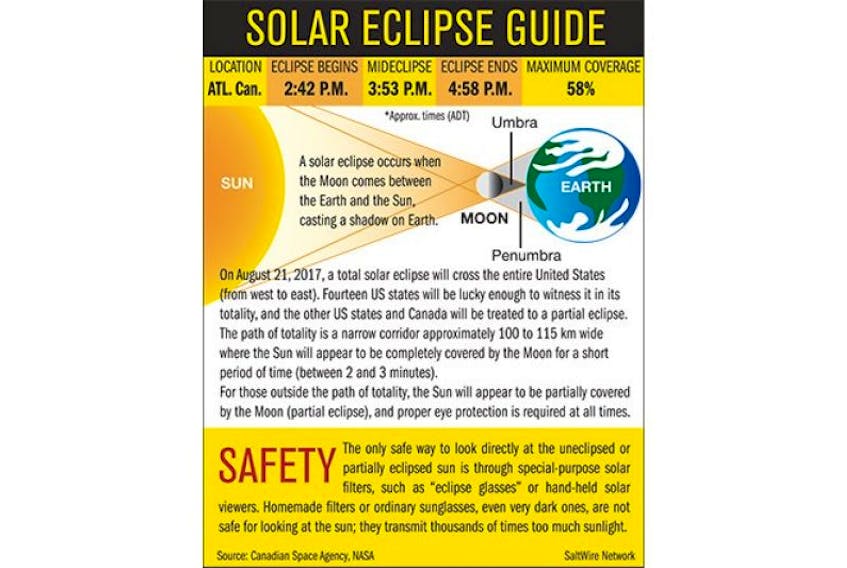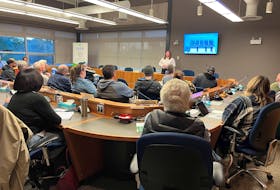Jamie Powell, a senior laboratory instructor with the physics department at St. FX University, stresses that looking straight at a solar eclipse is dangerous and can permanently damage one’s eyes.
“It’s not anything you should be doing without some eye protection,” he said, noting that “sunglasses are not good enough.”
He said people don’t normally stare at the sun, so they shouldn’t do that during an eclipse either.
Powell said a pinhole viewer can be used to see the phenomenon. “It’s something anybody can do – it’s quite simple, straightforward and it’s safe. It’s a tried and true method.”
Tiffany Fields is a graduate student in the physics and astronomy department at St. Mary’s University in Halifax. She reiterates that it’s essential to take precautions in order to view the eclipse – either using the pinhole viewer, specialized filters on telescopes or specific glasses. “It’s really important use ISO approved solar viewing glasses.”
She said a solar eclipse occurs somewhere in the world roughly every 18 months. From Nova Scotia, the eclipse will be partial, with about half of the sun blocked by the moon.
A total solar eclipse occurs when the moon passes directly in front of the sun, causing the sun’s corona to encircle the moon, which is dark.
Fields said the total eclipse will occur in a narrow area – about 100 km across – starting in Oregon and then travelling across the U.S. to South Carolina. “It’s really narrow strip where you can see totality.”
Fields said this eclipse is fairly rare, with the last total eclipse happening across the United States in 1918 – almost 100 years ago.
She said the partial eclipse will be visible in Nova Scotia in any place with clear skies. “All you need to do is see the sun – it can be in a backyard or the middle of a city.”
As of Friday, Environment Canada forecast that the weather would be sunny in Pictou County on Monday.
Fields is travelling to the United States to watch the eclipse. “I keep hearing it’s a life changing event,” she said.
She will drive six hours south from her home in Illinois to Missouri, which is within the 100 km strip of totality, and she said the total eclipse should last about two and a half minutes. “I'm pretty excited.”
Powell said a total solar eclipse hasn’t been visible from Nova Scotia since the 1970s, and because this is a partial eclipse, most people probably won’t even notice it. “It still leaves half the sun shining through. If you’re looking with some suitable filter, then you would see the moon pass in front of the sun and sort of take a bite out of the sun.”
He said a crescent shape will develop over time, and from the northern Nova Scotia vantage point, it will take about two hours for the eclipse to occur. He said it will start at 2:43 p.m. and end at 4:56 p.m., with the maximum eclipse taking place around 3:52 p.m. “It doesn’t really compare to being in the path of totality,” he said.
However, he noted that another total eclipse will happen in the area in 2024, with the path of totality going through New Brunswick.
To make a pinhole viewer to look at the eclipse safely, visit: https://eclipse2017.nasa.gov/how-make-pinhole-projector-view-solar-eclipse
SOLAR ECLIPSE QUICK FACTS:
• Canada has had total solar eclipses in 1963, 1972, 1979 and 2008.
• The last time Canada witnessed a solar eclipse was Oct. 23, 2014.
• Solar eclipses take place when the moon passes between the sun and the earth, and the moon’s shadow reaches the earth.
• The spectacle occurs because the sun and moon appear almost the same size.
• This happens because of a coincidence: the moon is about 400 times smaller than the sun, but it’s approximately 400 times closer to the earth.
Source: Royal Astronomical Society of Canada









